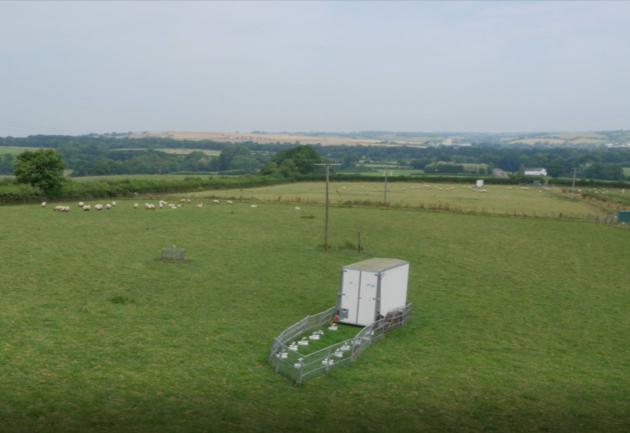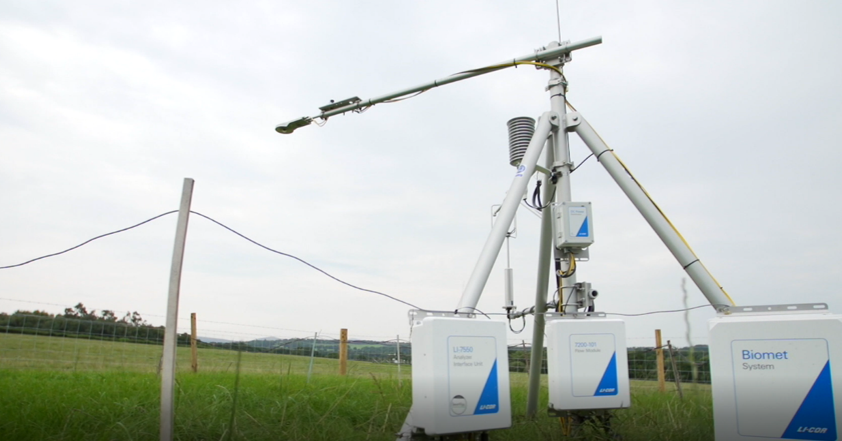Background and Purpose
The North Wyke Farm Platform (NWFP) was established in 2011 at Rothamsted Research’s North Wyke site in Devon. Supported by funding from BBSRC (UKRI), the NWFP uses a systems approach to study the complete flow of nutrients from soil to food, with the primary aim of making lowland grassland livestock farming more sustainable. The platform consists of three differently managed outdoor farming systems each of 21 hectares, made up of five component catchments. The catchments are comprised of single or multiple fields, that are highly instrumented to monitor and provide fine resolution data on all inputs, outputs and events. An aerial schematic of the catchments and fields is available.
Experimental Design
The timeline for each farming system treatment is as follows:
April 2011 to March 2013
All three pasture-based livestock farming systems were managed as permanent pasture with no separate treatments in operation to gather baseline information.
April 2013 to September 2015
Two of three systems gradually transitioned into the first post-baseline phase, one re-sown with high sugar grasses (red system), the other re-sown with high sugar grass, white clover mix (blue system). The third continued as permanent pasture (green system) and will always do so, for long-term monitoring.
September 2015 to April 2019
The first post-baseline phase was in full operation across all three livestock farming systems and pasture treatments.
April 2019 to Date
The first post-baseline phase is embarking on a transition to a second post-baseline phase, where the blue system will transition to a diverse multi-functional pasture, while the red system transitions to an arable system growing human edible crops. Given the red system will transition to an arable system, the cattle previously linked to this system will be housed representing a fourth (brown) system for evaluation of more intensive finishing and fine resolution monitoring.
Selected Results to Date
Livestock grazing improves soil health and thereby reduces the chance of floods. In turn, maintaining soil health also helps animals grow more efficiently. Each additional cow on pasture has been shown to enable the soil to retain further 360 L/ha/yr of water, rather than losing it downstream along with dissolved nutrients (Takahashi et al., 2018).
Clovers can help cut down the carbon footprint of cattle and sheep farms. The white clover-based system has been shown to be environmentally more efficient as it is not responsible for greenhouse gases produced during the synthesis of nitrogen fertilisers. (McAuliffe et al., 2018).
Life Cycle Assessment (LCA) of carbon foot-printing for pasture-based cattle production systems has shown that there are ‘green cows’ and ‘not-so-green cows’. Less polluting animals are economically more profitable, suggesting that environmentally sustainable grazing management is commercially feasible (McAuliffe et al., 2018).
Data Curation and Further Information
As a National capability funded by BBSRC, all data are freely available for download. Data available include: meteorological, soil moisture, precipitation, water flow and water quality, all at 15-minute intervals. Additional data include livestock, field event and field survey (plant species, plant nutrients, soil nutrients, soil fauna).
All data collections are accompanied by regularly-updated user guides together with live 15-minute raw data feeds and data portal updates.
Further information is available on the Rothamsted Research website.
Media
BBC Countryfile (25 July 2021): Graham McAuliffe was interviewed by Tom Heap about the experiment and how it fits in with the National Food Strategy. Watch the interview from 17:30 on BBC iPlayer (which is available up until May 2022).
LINKS
Contact:
Mobile site for greenhouse gas monitoring at NWFP
Monitoring cabin & flume for measuring water flows
Eddy covariance tower for monitoring methane





![SUPERIMPOSED AERIAL SCHEMATIC OF CATCHMENTS AND FIELDS [click image to expand]](https://images.squarespace-cdn.com/content/v1/54f09635e4b02703b86201fa/1578320524808-06E0XRAQF4H79GDCJMMG/NWFP+Field+Plan+%2B+Key.jpg)



